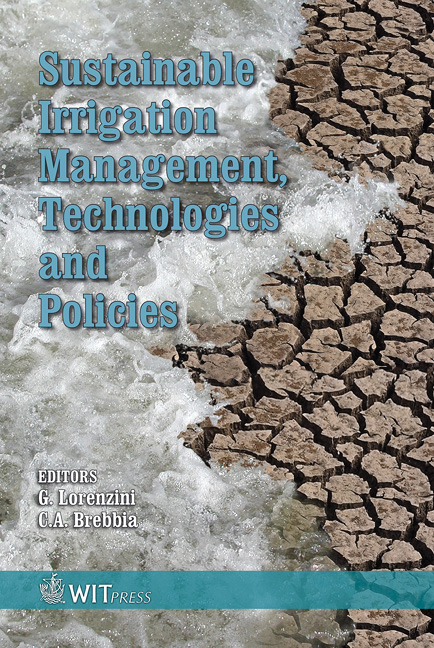Evapotranspiration, Yield, Crop Coefficients, And Water Use Efficiency Of Drip And Furrow Irrigated Processing Tomatoes
Price
Free (open access)
Transaction
Volume
96
Pages
5
Published
2006
Size
359 kb
Paper DOI
10.2495/SI060041
Copyright
WIT Press
Author(s)
B. Hanson & D. May
Abstract
A key component of sustainable agriculture is maintaining profitable yields, which involves applying sufficient water to meet a crop’s evapotranspiration (ETc) requirements. This requires knowledge of the current ETc requirement. Yield of processing tomatoes has increased by 53% over the past 35 years in California. Thus, concern exists about the current ETc and crop coefficients of processing tomatoes. Past irrigation practices were furrow and sprinkle irrigation, whereas drip irrigation is now commonly used in some parts of the state. Thus, the Bowen Ratio energy balance method was used in eight commercial fields to determine current seasonal ETc, crop coefficients, and water use efficiency for furrow and drip irrigated fields. Results showed seasonal crop evapotranspiration to range from 528 mm to 752 mm with an average of 648 mm. Commercial yields ranged from 78.6 Mg ha-1 to 146.7 Mg ha-1. Water use efficiency ranged between 0.114 Mg ha-1 mm-1 to 0.235 Mg ha-1 mm-1. No statistical differences in seasonal ETc, yield, and water use efficiency were found between furrow and drip irrigation. Mid-season crop coefficients varied from 0.96 to 1.09 depending on year with statistically similar values between furrow and drip irrigation for a given year. Current ETc rates were similar to those of the 1970s. Thus, average water use efficiency of processing tomatoes increased from 0.082 Mg ha-1 mm-1 to 0.12 Mg ha-1 mm-1 over the 35 year period. Keywords: evapotranspiration, processing tomatoes, drip irrigation, furrow irrigation, water, irrigation, tomato, water use, water use efficiency, crop coefficients.
Keywords
evapotranspiration, processing tomatoes, drip irrigation, furrow irrigation, water, irrigation, tomato, water use, water use efficiency, crop coefficients.





